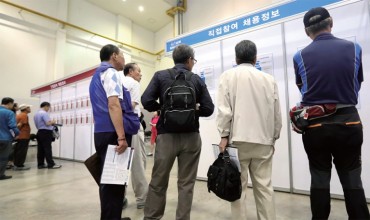
People wait to take coronavirus tests at a screening clinic in Seoul’s Mapo Ward on Aug. 4, 2022. (Image courtesy of Yonhap)
SEOUL, Jun. 27 (Korea Bizwire) – A recent report from the Korea Disease Control and Prevention Agency (KDCA) reveals a troubling trend in South Korea: intentional self-harm hospitalizations have more than doubled over the past decade, with teenagers being the most affected group.
According to the “2022 Hospital Discharge Injury Statistics” released on June 26, the discharge rate for patients hospitalized due to intentional self-harm was highest among adolescents aged 13-18, at 64 per 100,000 population. This was followed by seniors aged 65 and above (52), adults aged 19-64 (32), and children aged 0-12 (1).
The discharge rate for intentional self-harm among teenagers has seen a dramatic increase, rising by 128.6% from 28 per 100,000 in 2012 to 64 in 2022. This surge was particularly pronounced during the COVID-19 pandemic, with rates jumping from 48 in 2020 to 57 in 2021, and then to 64 in 2022. Experts suggest that increased social isolation and alienation due to pandemic measures may have contributed to this trend.
Gender disparities were also evident, with teenage girls (100 per 100,000) showing a rate 3.2 times higher than that of teenage boys (31) in 2022.
Contrastingly, the discharge rate for intentional self-harm among seniors aged 65 and above decreased by 35.8%, from 81 per 100,000 in 2012 to 52 in 2022.
The statistics for drug-related poisonings (both intentional and unintentional) also showed a higher prevalence among young women. In the 15-24 age group, the discharge rate for women was 90 per 100,000, 2.5 times higher than that for men (36).
In 2022, injury cases accounted for 1,142,195 patients, representing 15.4% of all hospital discharges. While this represents a 2.3 percentage point decrease from a decade ago, injuries remain the most common reason for hospitalization, surpassing cancer (11.7%) and digestive system diseases (11.3%).
The primary causes of injuries were falls (49.6%), traffic accidents (22.1%), and collisions (11.1%). Women were discharged for fall-related injuries at a rate 1.5 times higher than that of men. Over the past decade, traffic accident-related discharges decreased by 42.4%, while fall-related discharges increased by 42%.
Injuries most commonly occurred on roads and highways (29.2% for men, 24.1% for women) and in residential areas (13.2% for men, 27.4% for women). The average hospital stay for patients with injuries was 13 days, longer than the overall average of 8 days.
KDCA Commissioner Youngmee Jee underscored the necessity of customized injury prevention strategies tailored to various life stages. “We will develop and disseminate injury prevention guidelines based on life-cycle specific injury characteristics identified through our surveillance system,” she stated.
M. H. Lee (mhlee@koreabizwire.com)






